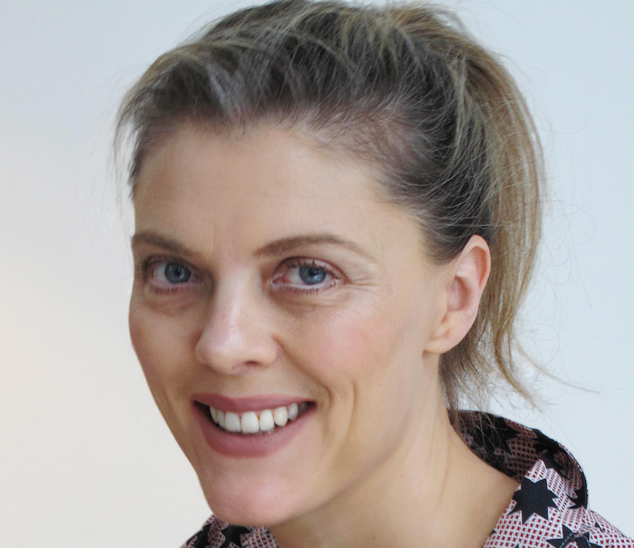Emma Usher, founder of celebrity consultancy RunRagged, explains how you can put influencers to good use to drive sales and help your e-commerce brand grow.
When Meghan Markle was photographed using a Strathberry Handbag, it sold out within hours of the pictures being published and suddenly the Strathberry’s founder’s low-key label was the name on the lips of style-watchers and consumers all over the world. From Marilyn Monroe’s ode to Chanel No. 5 through to a modern-day Instagrammer having an impact on the brands they love, influencer marketing has been around for decades and remains one of the strongest ways to build a brand and drive sales.
The influencer marketing landscape is changing, becoming more sophisticated and without the industry experience, it can be tricky to know who to work with, how to get in front of them or where to start the negotiation process.
For over 20 years, RunRagged has been connecting brands with influencers and A-list talent such as Kate Moss, Benedict Cumberbatch and Anthony Joshua through to Taylor Swift and Lewis Hamilton, so we know the dos and don’ts for working with influencers.
We see too many brands fall into the pitfalls of booking the wrong talent and not making the most of the opportunities available. Knowing what talent will or won’t do, who to approach and how to get value for money is key to influencer marketing success. To help you find the right influencer on board, here are our top tips:
The power of the micro-influencer
With Facebook constantly changing its algorithms making it harder for brands to organically reach their fans, the role smaller influencers play is becoming increasingly important. While it might appear logical to target influencers with the biggest followings, it’s important to dig a little deeper and analyse whether an influencer with millions of followers is really going to move the needle for your brand. You can often have a more powerful impact by working with five influencers with 50,000 followers rather than one with 250,000.
One way to maximise the power of the micro-influencer (generally speaking, individuals who have 10,000 – 100,000 highly engaged followers around relevant topics) is by looking at how your product can be packaged for different niches. If you have a product that can be used by people with different interests, such as a new fitness gadget, you can either go directly to one influencer with a huge following or many smaller influencers whose follower count equals that of the big influencer. By doing the latter, you can reach a more diverse audience via a yoga instructor, sprinter and fitness blogger rather than one big fitness blogger.
Know your audience
It’s easy to think you can gauge an influencer’s impact by looking at their follower count. Having a big reach can be great for a brand but a really important factor is follower engagement.
It’s essential to understand an influencer’s audience. If they’re going to promote your product, gaining brand exposure is only going to be successful if their followers fall into your specific target market. For example, if you’re a health foods company, you’ll have more success by going to influencers who create content around fitness, healthy living and people with dietary requirements rather than a famous model.
Many people will follow big names on Instagram with 1 million followers because they think they should, instead of being interested or engaged in what they’re saying. These big influencers could ask for between £5,000 – £10,000+ per post. You can get better value by working with smaller, targeted influencers, which could involve gifting a product via portals such as the VIP Suite or paying fees of £500 – £3,000 for targeted influencers who have followers between 25,000 and 500,000.
Although an influencer may seem logical for your brand, does their following fall in line with your brand? A great example is that a female model might seem like the right influencer for a makeup brand, but they may well have a more male-dominated audience! Overall, this wouldn’t be the most suitable influencer for a makeup brand.
Gymshark, a UK-based fitness clothing brand, have heavily relied on bloggers, vloggers and “ambassadors” to raise their profile on social platforms. Their 75 influencers are fitness bloggers who have a combined social media following of over 20m. In six years, the company has gone from a start-up to £100 million annual sales. This is a fantastic example of an e-commerce brand who has understood the habits of their target audience 25-year-oldsr olds) and tapped into influencers who appeal to that demographic.
Create authenticity
Consumers have wised up to social endorsements and are more conscious about the content an influencer may produce, and whether it’s been created for pay or because the influencer has a genuine love for the brand. Forming organic relationships with influencers is more important than ever and brands should be prioritising authenticity.
That’s why we created The VIP Suite-an influencer engagement platform that lets brands offer products direct to a profiled list of talent, and if the talent likes what is on offer, they can order it. It’s basically like a dating website for brands and talent and getting a ‘match’ can lead to some really powerful, organic engagements. The platform helps to identify true fans of the brand and can help to seed out influencers for future campaign work for both authenticity and value. It’s much more powerful to find celebrities and influencers that actually like your business, rather than paid endorsers. By spending time and putting in the effort into finding your genuine fans you’ll reap the rewards later.
It can also be a useful tool for international brands looking to test the UK market or for UK brands to break into international markets or really put them on the map in other territories. We dressed Taylor Swift in Oasis via The VIP Suite and when she was papped in that dress shopping in New York with Cara Delevingne, it sold out internationally and was even continued into another season as it proved to be so popular. We also helped US brand Leesa Sleep get their award-winning mattresses into the hands of 100+ talent which resulted in organic exposure for the brand, which in turn helped grow their social platform and awareness of their products, in what is an immensely competitive market, enabling them to get a firm foothold in the UK market.
Driving awareness and turning it into sales
It can be difficult to determine the direct impact an influencer has on a brand’s sales but one shouldn’t underestimate the power of awareness – this is what causes people to make the purchase choices they do – either shortly after the influencer has talked about a brand, or at a later date in-store, online or via a third-party retailer. Although sometimes it’s impossible to quantify, awareness is a really important part of any brands marketing and sales plan. To maximise sales, brands should always look to capitalise awareness that influencers generate for them, whether in paid for activity, organic seeding or collaborations.







